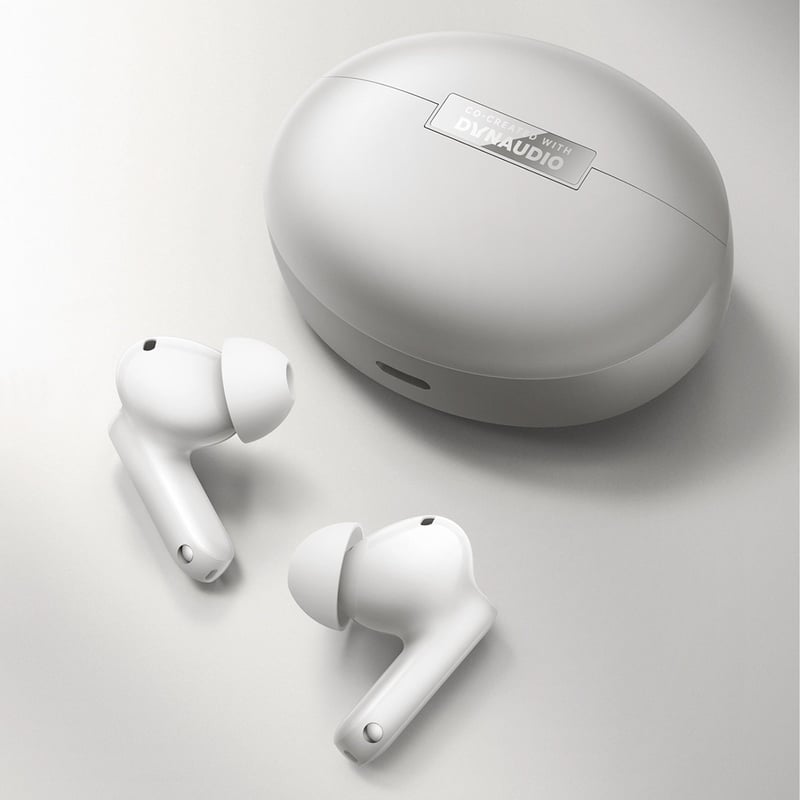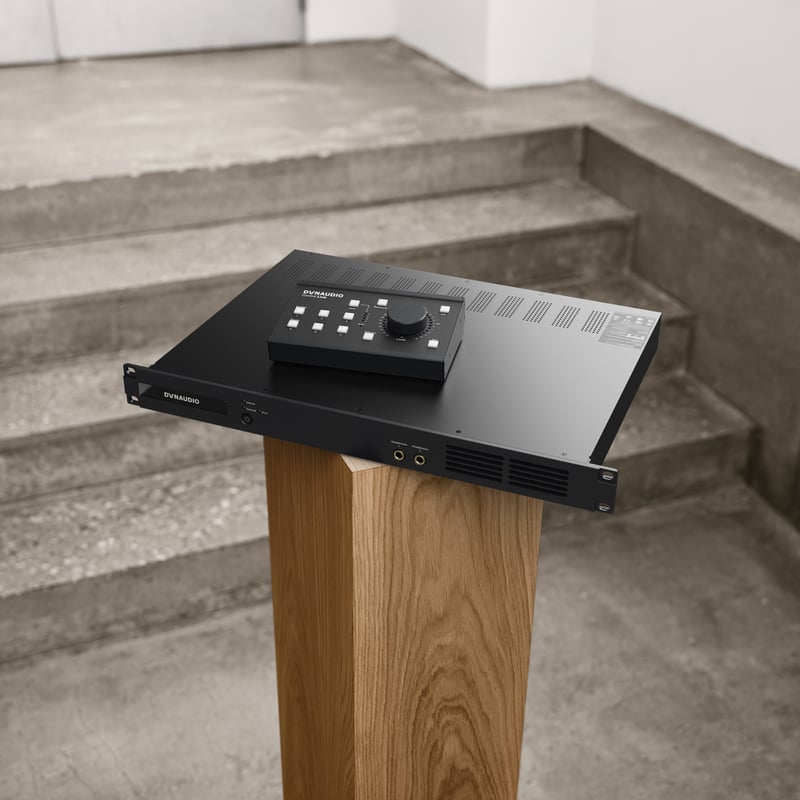To learn more, we asked Morten Hermansen, Senior Sound Tuner – Car, to join us on our Ask the Expert show, and for a meeting to talk about his work as a sound tuner and how the job has evolved over the years. According to Morten himself, he’s tuned around 50 cars for Volkswagen and spent nearly ten weeks every year for the last decade at Volkswagen’s headquarters in Wolfsburg. Here we talk about how work with the Passat B6 compared with the Passat B8 and how technology has changed in-car audio. Our lightly edited conversation follows.
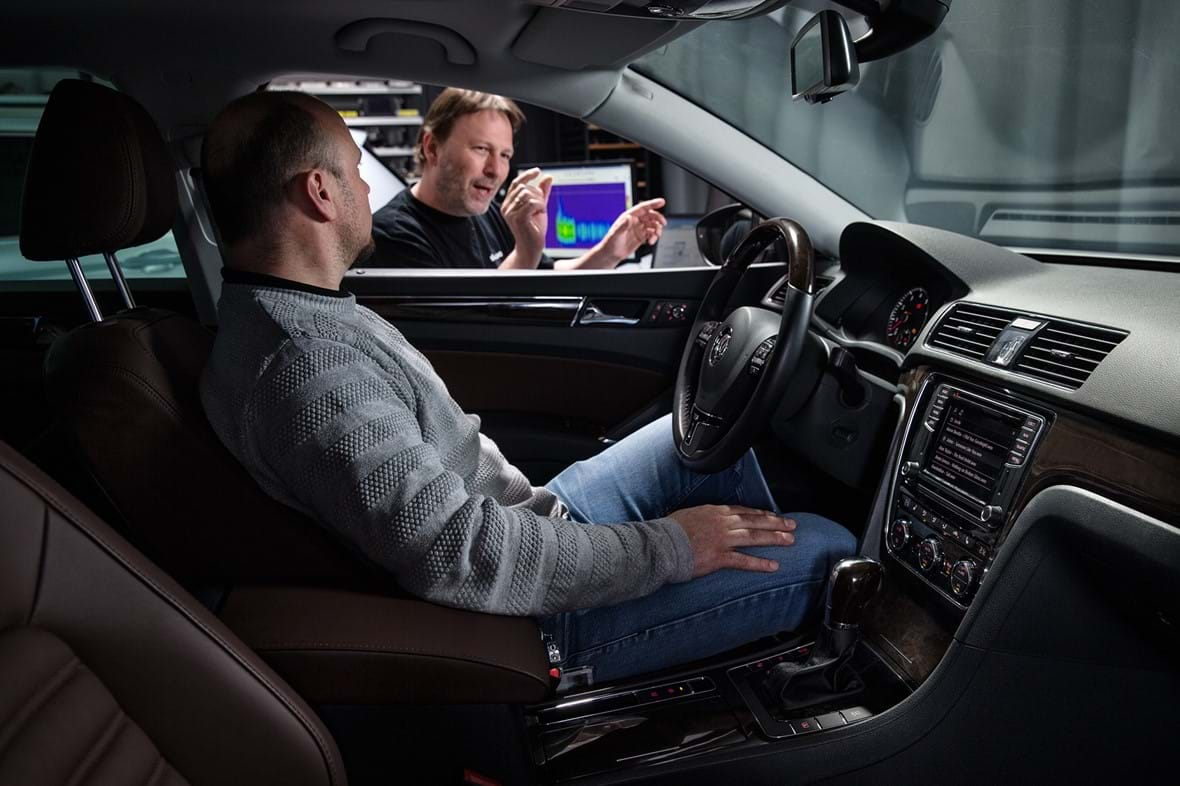
Control down to the millisecond
Christopher Kjærulff: Tell about your time at Dynaudio, Morten. How long have you been here and what have you been up to in your time here?
Morten Hermansen: I have worked at Dynaudio for more than 15 years. I started in 2000 and then left for another company around 2005, but after little more than a year away from Dynaudio I was asked if I wanted to come back – and I did.
In that time, I’ve worked on a few different things. At first, I designed woofers, midranges, and tweeters for our Hi-Fi products and we still use the basic designs of them in some of our current drive units. But eventually, I began to focus more on in-car audio projects.
Why the change?
We needed more people working on our in-car sound projects in 2002. We had just agreed to start working with Volkswagen, so my first car project became the Passat B6. It was a ton of fun and a learning process – it was pioneering work we did back then.
What do you mean with pioneering work?
At that time, high-end audio systems for cars weren’t common. In many cars, the premium option was only upgraded drive units, but they still used four-channel head unit amplifiers. We used a separate 10-channel amplifier in the B6, which meant we had to write the playbook as we went along - It didn’t really exist.
Can you tell a little more about the Passat B6 project – what was the task?
The task was to develop and build drive units for the Passat B6: two types of woofer, one type of midrange, and two sizes of tweeters. However, Volkswagen had predefined where we could put them and what size the drive units could have, so we had to build something that fitted into those specifications. And, we got Volkswagen to agree on using the separate 10-channel amplifier I talked about to make sure we could design and implement a tuning that offered the real Dynaudio sound experience.
We had to figure out how to control all of those channels and keep them in check. And as I said, it was relatively unexplored territory back then. In addition, software anno 2002 was pretty poor compared with what we have available today. And to make it more uphill, even getting the car to understand what we were trying to do was a challenge. Nonetheless, we figured it all out and made it work, but it wasn’t easy.
I know you more recently worked on the Passat B8. With those tools available, how does that project compare with the B6?
In comparison, we use a powerful 16-channel digital amplifier with 680W of total output with a state-of-the-art 16-channel DSP processor. But, we also have much more computer processing power to play with than we did in 2002. And, we put that to good use by adding advanced digital signal processing with complex algorithms to control timing down to the millisecond. And when we make changes, we do it with absolutely no fuss on a laptop; changes that apply instantly.
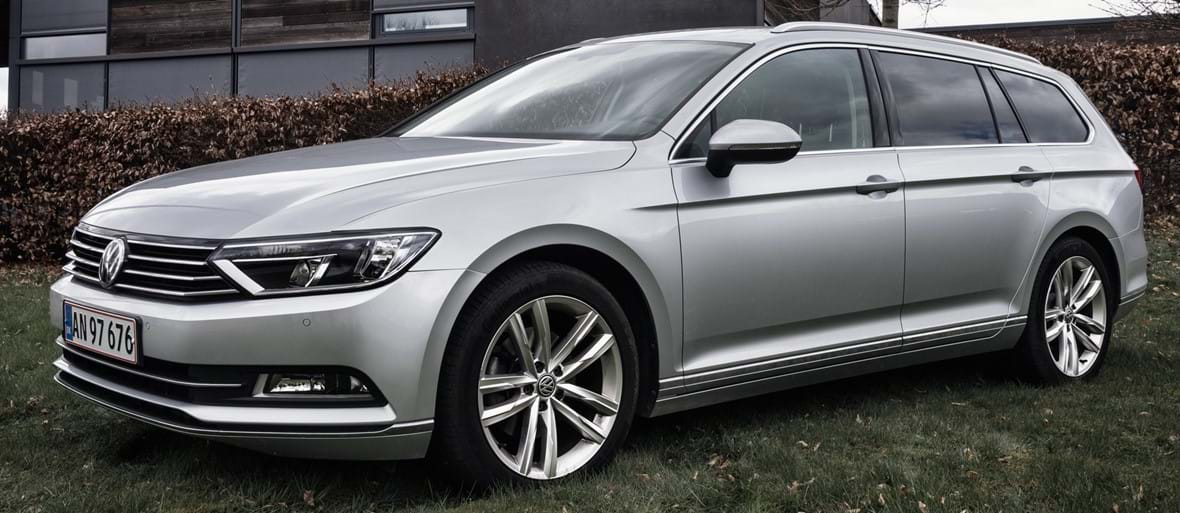
We are biologically programmed to understand the directionality of sound - if you weren’t good at it, good luck not getting eaten.
Morten Hermansen,
High-quality bass throughout your car: it's more than the subwoofer
Also, we have added a centre channel in the front and a subwoofer in the back of the B8. When we combine the centre channel with what we can do with DSP, we create a much more precise sound stage with instruments and voices easily distinguishable from each other.
And what does the subwoofer add?
It adds control. Tightness. A common misconception is that the subwoofer alone reproduces low frequencies – it doesn’t. It works together with all of the woofers to produce high-quality bass performance that’s even and rich in detail throughout the car.
The subwoofer excels at eliminating standing waves in the cabin, which is an important job as it means you don’t get too much boom in the low frequencies or a boom that resonates; ‘lasts too long’ you could say.
You also have to remember that the Passat B8 is from 2013, and both amplifier technology, computer processing power and digital signal processing have continued to progress and become better.
How do you get started with the sound tuning?
We need to find out how best to integrate the different drive units. So we make sure they have the right working conditions and that they are in the right places throughout the cabin. The next step is to measure their individual sound output. By measuring all of the drive units, we can identify the main issues and challenges in the particular vehicle’s environment. We also do it to get an idea of how the cabin absorbs and reflects sound, which is crucial for timing the drive units correctly later on. In this phase, the majority of our time is spent on alternating between listening and measuring.
What’s next?
We start to play around with how to time each drive unit in relation to all of the others. Here, technology, and the advances we have seen since 2002, really starts to show its worth by speeding up our work but also making what we do more reliable and more precise.
We simply open a programme to review our code, to make alterations to it, to move around the distance spacing between drive units with down to as little as .02ms, and to flash our new tuning onto the amplifier to a/b test our changes instantly.
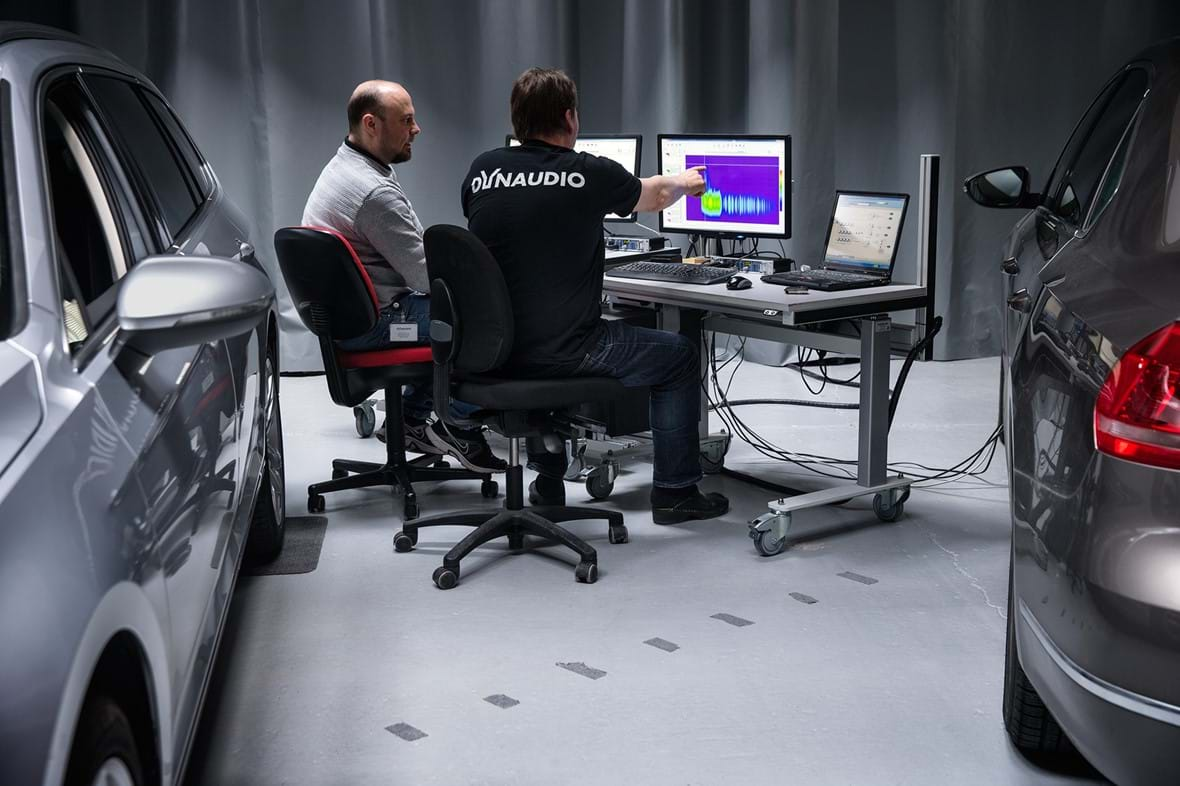
An environment filled with reflective surfaces
With that said, we also rely heavily on our own brains. There aren’t any programmes (yet) that can tell you where to move those milliseconds or where the frequencies should be delayed to make it sound just right. We are biologically programmed to understand the directionality of sound (if you weren’t good at it, good luck not getting eaten). We will immediately recognise it as a problem when the directionality is off, which makes our ears and brain the perfect tools for designing a natural sound experience in an environment filled with reflective surfaces.
Again, it’s about listening to the system for hours and hours, trying to figure out what’s the best solution for a given challenge or which tuning we ultimately like the best.
And I guess a/b tests come in handy when you have to make those decisions?
Absolutely. It’s much easier to evaluate two tunings when we can change between them effortlessly. In 2002, it took 15 minutes to change tunings, easy. And while we did that, concentrating on something else entirely, we forgot how the first tuning sounded.
It’s incredibly difficult to remember what something sounded like, the details that you liked or disliked, even after something as short as 5-10 minutes. The ability to switch between two solutions quickly helps us make better decisions and save time.
What happens when you’re done with the audio system?
Often, we go to Wolfsburg to present the car to the Volkswagen team. They spent time listening to it and if they’re happy, done. If there’s something they are unhappy with, then we work together to solve it or change the tuning. It’s not a “take-it-or-leave-it” kind of relationship.
How many systems have you designed for Volkswagen?
In total? I would say around 50: half of them were from scratch, where we went through the process we talked about; the other half were adjustments, where we fitted the original tuning onto a new amplifier with a different typology.
What’s the best thing about this process: what do you enjoy the most?
When we manage to impress our colleagues at Volkswagen. When they keep saying “just one more,” but still keep listening to the system after five more songs. When I see how they get caught up in the experience and they are grinning from ear to ear. That’s an amazing feeling, and it makes all of the hard work worth it – I mean that’s the whole point, right?
Does something stand out? Any favourite experiences?
Yeah, there are especially two things that stand out. It’s been so much fun to experience how the car industry works first-hand. I think most would agree that it’s a business shrouded in secrecy, so being at Volkswagen’s headquarters, visiting their development facilities, and getting to drive prototypes have been incredible experiences for a car lover like me.
And then there is the Bugatti. Designing the sound system for the Bugatti Veyron – the Puccini system – and getting to drive a super car on Volkswagen’s test track … Well, that’s something I won’t forget.
We’re at my last question, Morten. What’s the most important thing people need to know about in-car sound systems?
People often want to know if we tune each individual car. And yes, we do. All cars have different variations such as a 3-door, a 5-door and a station wagon, so we need to make different configurations and different tunings for each one to offer the best possible audio performance.
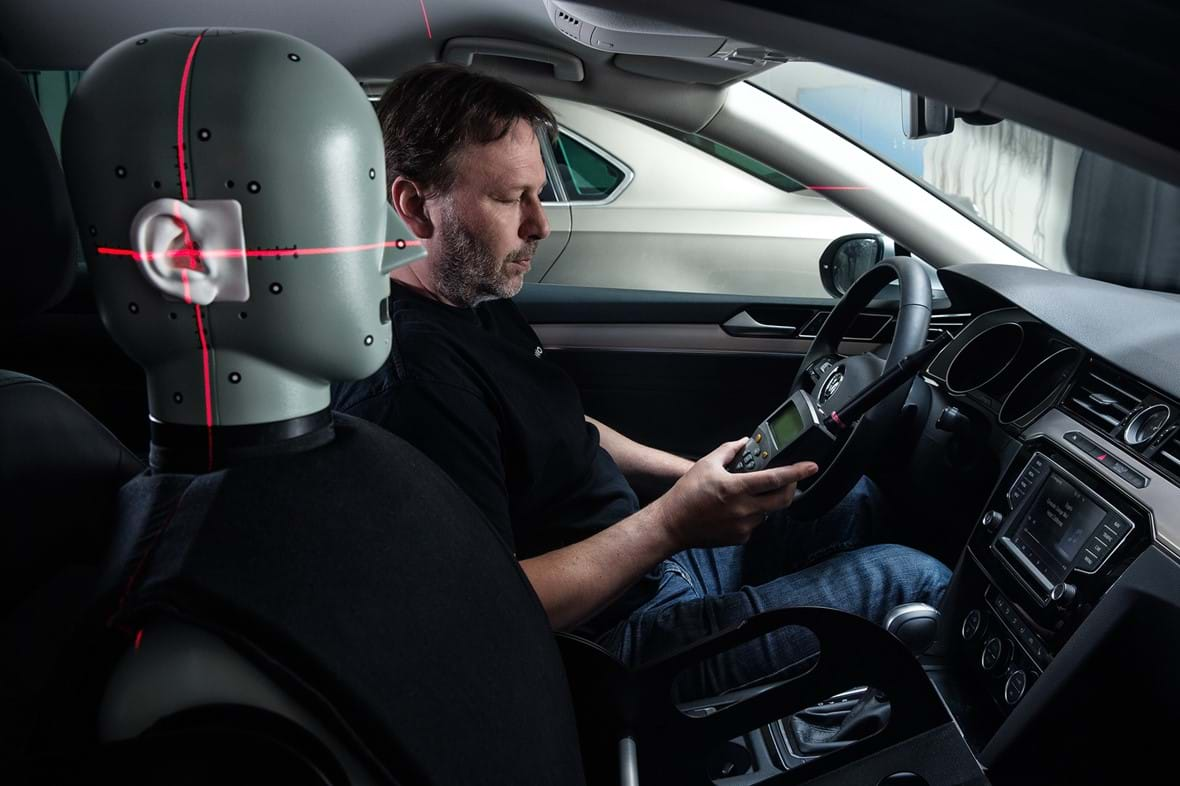
Test the in-car sound system. But bring your own music
Also, I think people should think more about the sound system in their car – especially when they go shopping for a new one. For some, it’s not unrealistic to spend a couple of hours in the car each day. And while they’re driving, they are listening to music, to the radio, or to audiobooks on systems that are, at best, average. Do yourself a favour, give the upgrade a try.
If they do, do you have any tips for people?
Don’t make it too complicated. Get in the car and listen to the system with closed doors. I would recommend turning the volume up to around half. That’s where you’ll hear the real difference in quality. Also, bring some music that you know really well on a CD or an SD-card – don’t ever just listen to the radio.
The daily commute is an opportunity to listen to the music you love on a great music system without anybody asking you to turn down the volume – that’s pretty neat, isn’t it?
Want more?
Want to know more about the Passat B8? Find it here and explore its sound system.
Curious about the technologies we use in our in-car audio systems? Click here to read all about the tech we use.
Sign up to get more great articles
Nothing compares to the satisfaction of knowing – for a fact – that something is as good as it gets



